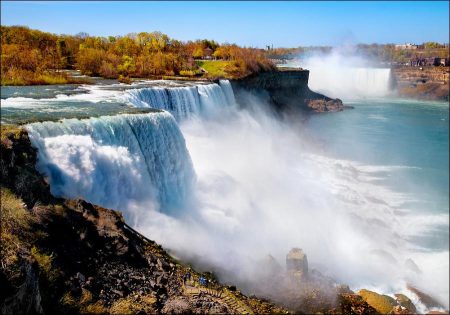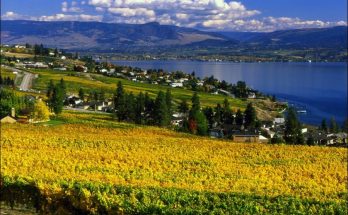The Niagara Region is small but it enjoys prominence as a corridor and gateway to the United States and because of the important economic activities for which it is the focus.
Physiographically, it consists of two plains, a narrow lowland between Lake Ontario and the Niagara Escarpment and the wider plain between the brow of the escarpment and the shore of Lake Erie.
The Ontario plain is a zone of dense rural settlement with an intensive horticultural type of land use. Here are produced the bulk of the peaches and grapes grown in Ontario, as well as strawberries, raspberries and other small fruits. Some fruit growing and truck farming is found above the escarpment, most of this plain is occupied by dairy and general live stock farms.
The Niagara Region is the source of an immense supply of power which supplies its own manufacturing cities and those of all southwestern Ontario through the medium of the Ontario Hydro-electric Commission. Power is developed on the Niagara River and at De Cew Falls with water from the Welland Canal. The canal, by permitting the passage of large freighters, enables many of the industries of the region to import cheaply much needed raw materials. This is especially important to the paper industries of Thorold and the steel mills of Hamilton.
Niagara Falls has been a mecca for tourists for over a century and still draws its crowds of visitors. The shores of the lakes have many cottage colonies such as Burlington Beach, Grimsby Beach, Port Dalhousie and Crystal Beach. The first three are on Lake Ontario, the last named is on Lake Erie and functions as a suburb of Buffalo, being more frequented by Americans than by Canadians.
Many small early villages were established on the small creeks along the escarpment. Small ports also grew up on the Niagara River, Lake Ontario and Lake Erie. These early settlements have not all become modern cities because the railways and the canal have given the advantage to other sites. The cities of the river and canal section, however, are far outweighed by the development of Hamilton at the other end of the corridor.
Visits: 69



